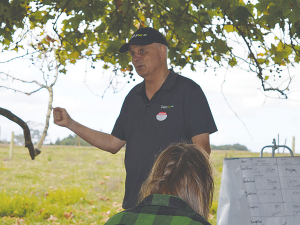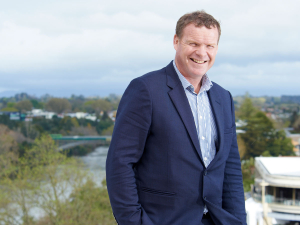Now is the time for dairy farmers to develop a pasture ‘road map’ to ensure they have enough feed to take their farms through calving to the balance date in mid-September.
That’s the message DairyNZ farm systems specialist Chris Glassey gave at a recent smaller milk and supply herds (SMASH) field day on the Rogers Charitable Trust Farm in Te Awamutu.
Balance day is the time in spring when pasture growth exceeds feed demand or the rate at which cows eat grass; the animals are no longer able to keep up with pasture growth.
If average pasture cover is too low cows will be underfed and pasture growth reduced; if average pasture cover is too high its quality will decline later in spring and production will suffer when cows are forced to graze to a lower residual than a previous grazing.
Glassey told about 70 farmers at the field day that feed plans implemented now will determine whether spring pasture targets are achieved.
He advised working back from spring requirements to what is on hand now, making the drying-off decision, selecting economically viable options to fill a feed deficit and setting the farm up to hit spring performance targets.
Glassey says as farms start planning to dry-off cows and set themselves up for calving, three factors are critical: body condition score at calving, average pasture cover at start of calving and average pasture cover at balance date.
Every farm will use a different formula to work out the average pasture cover depending on stocking rate and rotation lengths.
For the Rogers Charitable Trust Farm the balance date is September 14 and average pasture cover at balance date must be 2000kg dm/ha.
The farm milks 190 cows and is targeting 74,000kgMS this season; calving will start on July 14.
Glassey noted that while the balance date is a long way away feed planning must start now.
He urges farmers to break their pasture road map into three parts: from now to June 1, June to July when cows are dried off and from the planned start of calving to balance date.
“If we talk about the plan in those three timeframes it will help us,” he says. “The pasture road map must have these three signposts along the way; at each changeover point see how you may be going.”
He recommends working backwards from the balance date. From balance date to start of calving is about 65 days; feed demand increases as dry cows become lactating cows. Later in the calving period, cows need more feed.
Glassey says farmers must calculate what the feed demand will be post-calving and what would be the average pasture cover on the farm then.
“How much supplement have we got? If we get 50 tonnes now and by June 1 it is all fed out what does that leave for winter and calving period?”
For the Rogers farm it was worked out that average feed demand from start of calving to balance date would be 40kg/day. Average pasture growth in Te Awamutu is 28kg/day from mid-July to mid-September.
Glassey says this shows feed demand is greater than pasture growth for the farm.
“We are going backwards at 12kg/day; at balance date, on a pasture-only farm we would be 780kg less than where we were at start of calving.”
Glassey says a pasture road map is useful for farmers who identify pasture management as a way to boost profit.
“By working backwards from balance date, when pasture supply is equal to demand to autumn you can create a more effective management plan for the year.
“If you act now you will be in a good position when pasture growth peaks in spring [after balance date].”


















